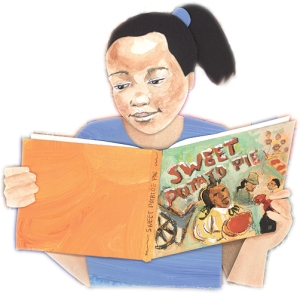![]() Jaclyn DeForge, our Resident Literacy Expert, began her career teaching first and second grade in the South Bronx, and went on to become a literacy coach and earn her Masters of Science in Teaching. In her column she offers teaching and literacy tips for educators.
Jaclyn DeForge, our Resident Literacy Expert, began her career teaching first and second grade in the South Bronx, and went on to become a literacy coach and earn her Masters of Science in Teaching. In her column she offers teaching and literacy tips for educators.
Over the next several weeks, I’ll be modeling how to do a close reading at several different grade levels. Last week, I wrote about close reading in Kindergarten. Next up: Close Reading in First Grade using the H level text Pop Pop and Grandpa by Mary Dixon Lake and illustrated by Christiane Kromer.
In terms of student questioning, start general and move up Bloom’s Taxonomy by gradually increasing the rigor. For example, say you want to focus your close reading of Pop Pop and Grandpa on the setting and events of the story (1st grade Literature Standard, Integration of Knowledge and Ideas, strand 7, from the Common Core Standards). Here are the questions I would ask:




